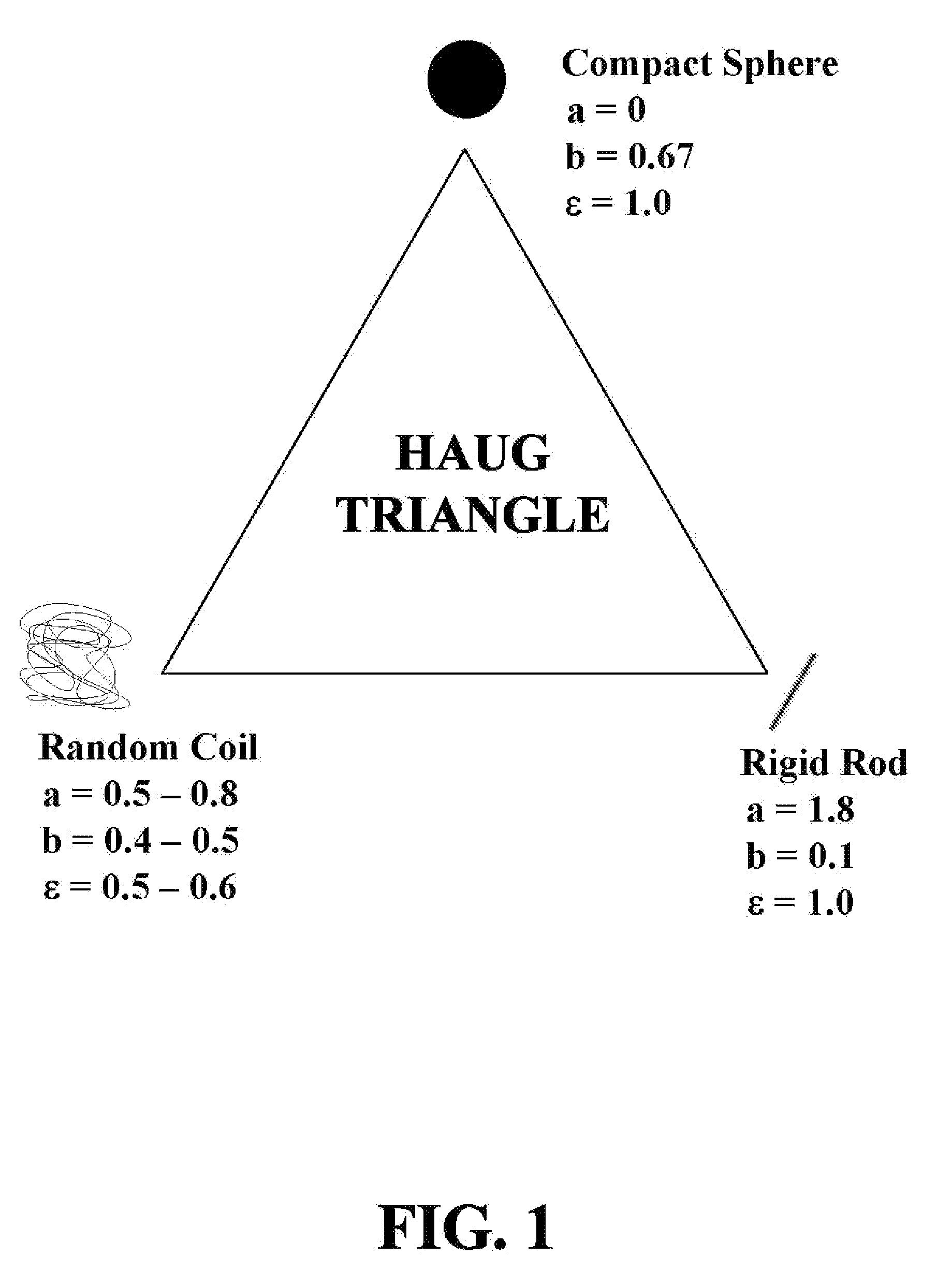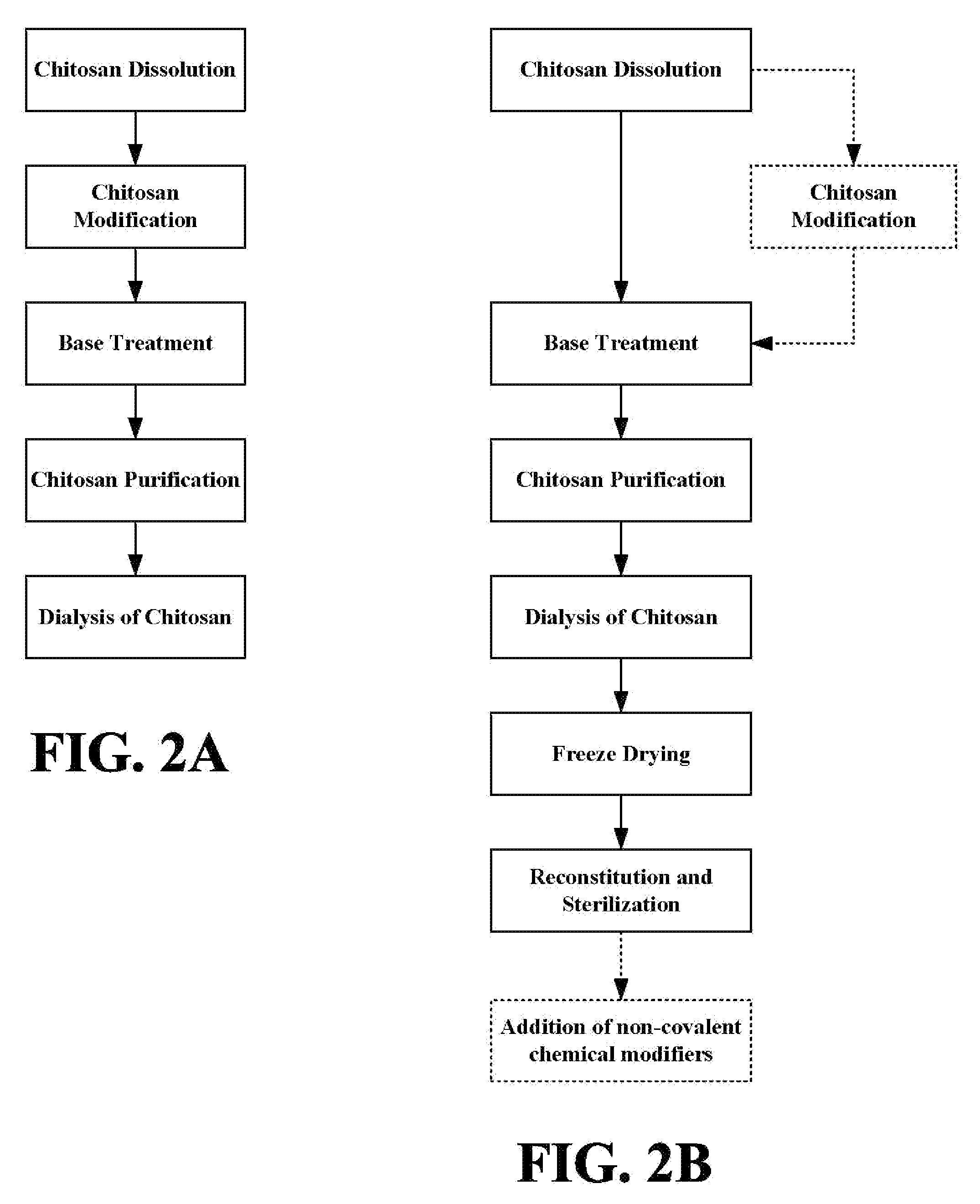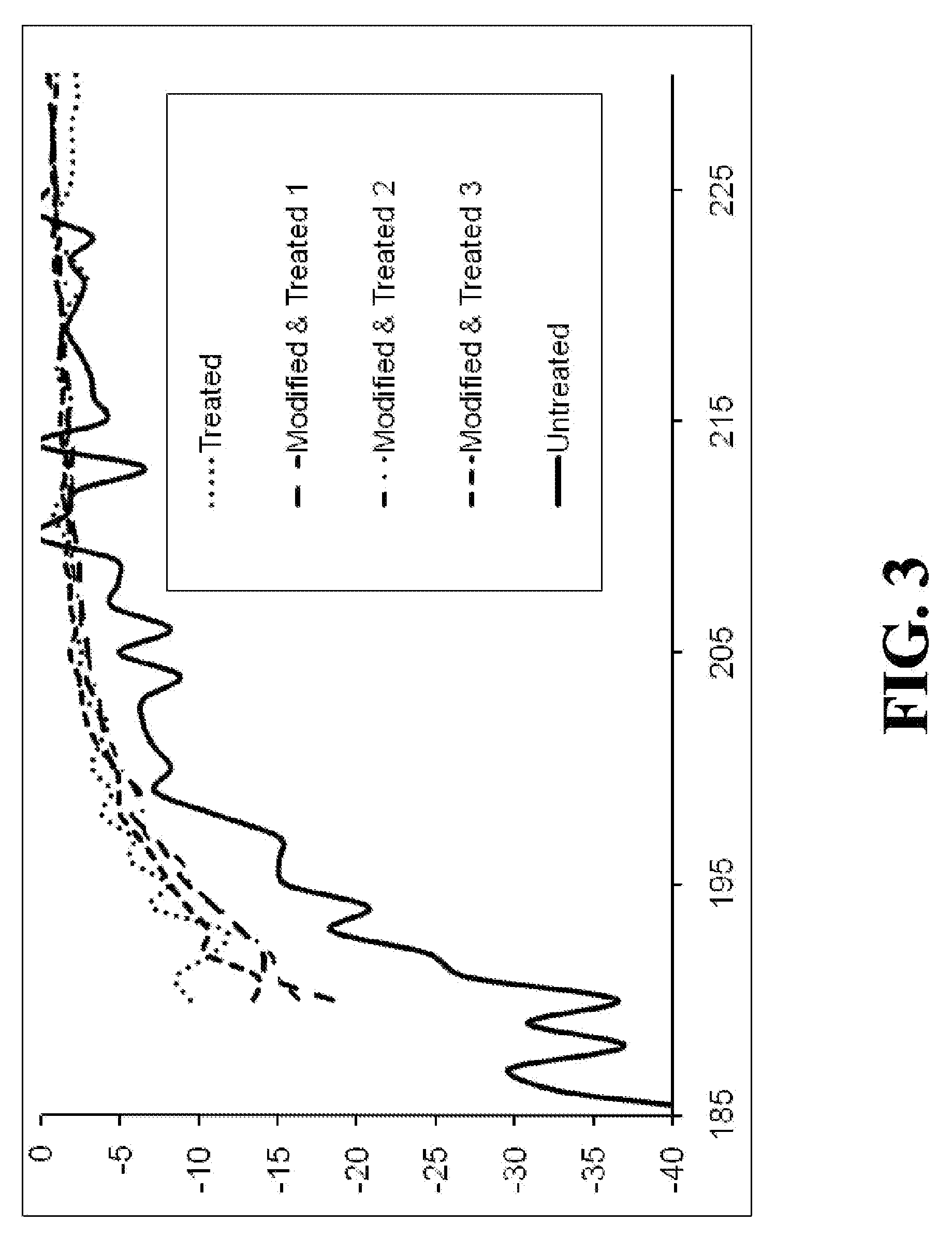Novel biomaterials and a method for making and using same
a biomaterial and biotechnology technology, applied in the field of new biomaterials, can solve the problems of many products, brittle cured polymers, and a barrier to tissue regrowth, and achieve the effects of preventing tissue regrowth, and reducing the number of products
- Summary
- Abstract
- Description
- Claims
- Application Information
AI Technical Summary
Benefits of technology
Problems solved by technology
Method used
Image
Examples
example 1
Modification of Chitosan with a Class A Modifier and Sulfonyl Chloride Coupling
[0123]This example illustrates the preparation of a Class A type of covalent modification of chitosan with an alkyl sulfonic acid via a sulfonic acid chloride. This synthesis was designed to target a chitosan modification ratio of about 1% (one octane sulfonamide linkage per 100 glucose subunits).
Procedure
[0124]In a beaker, 2 grams of chitosan were combined with 40 mL of 10% (v / v) lactic acid. The chitosan was allowed to solubilize overnight. When the chitosan was fully dissolved the sample was placed on a mechanical mixer and stirred at a speed of 80-120 rpm and allowed to mix for 30 minutes. With continued mixing, 100 μL of octanesulfonyl chloride was added dropwise to the chitosan. The sample was allowed to mix for an hour and then 6M NaOH was slowly added until the pH of the sample was between 9 and 10. This pH was maintained with continued mixing for 2 hours. The chitosan was then redissolved by the ...
example 2
Modification of Chitosan with a Class C Modifier and Diimide Coupling
[0125]This example illustrates the preparation of a class C type of covalent modification of chitosan with N-(2-diethylamino-ethyl)-succinamic acid using diimide coupling.
Procedure
[0126]In a beaker, 1.00 g (5.7 mmoles of chitosan monomer units) of chitosan was dissolved in 0.1 N HCl. Then, 0.40 g (1.8 mmoles) of N-(2-diethylamino-ethyl)-succinamic acid was added to the chitosan solution. Next, 0.52 g (2.7 mmoles) of 1-ethylene-3(3-dimethylamino-propyl)carbodiimide hydrochloride (EDC) or N-ethyl-N′-(3-dimethylaminopropyl)carbodiimide hydrochloride and 0.78 g (0.68 mmoles) N-hydroxysuccinimide (NHS) or 1-hydroxy-2,5-pyrrolidinedione was added. The pH of the resulting solution was adjusted to 5 with 1 N NaOH and the mixture was stirred for 24 hours at room temperature. The resulting modified chitosan was purified by precipitation by adjusting the pH to about 9 with 1 N NaOH and collecting the precipitate by centrifuga...
example 3
Modification of Chitosan with a Class C Modifier and Acid Chloride Coupling
[0127]This example illustrates the preparation of a Class C type of covalent modification of chitosan with N-(2-diethylamino-ethyl)-succinamic acid using acid chloride coupling.
Procedure
[0128]In a beaker, 0.40 g (1.8 mmoles) of N-(2-diethylaminoethyl)succinamic acid was dissolved in approximately 10 mL of dry THF. Then, 0.26 g (2.2 mmoles) of thionyl chloride was added to the solution and refluxed for one hour with a drying column attached. After refluxing, the solution was cooled to room temperature. 1.00 g (5.7 mmoles of chitosan monomer units) of chitosan was dissolved in a 10% (w / w) acetic acid solution. The N-(2-diethylaminoethyl)succinamic acid chloride solution was then added dropwise with stirring to the chitosan solution. After reacting the chitosan with the succinamic acid chloride, the pH was adjusted to a value between 7 and 8 with 1 N NaOH and the reaction was allowed to continue for 2 to 4 hours...
PUM
| Property | Measurement | Unit |
|---|---|---|
| Fraction | aaaaa | aaaaa |
| Fraction | aaaaa | aaaaa |
| Fraction | aaaaa | aaaaa |
Abstract
Description
Claims
Application Information
 Login to View More
Login to View More - R&D
- Intellectual Property
- Life Sciences
- Materials
- Tech Scout
- Unparalleled Data Quality
- Higher Quality Content
- 60% Fewer Hallucinations
Browse by: Latest US Patents, China's latest patents, Technical Efficacy Thesaurus, Application Domain, Technology Topic, Popular Technical Reports.
© 2025 PatSnap. All rights reserved.Legal|Privacy policy|Modern Slavery Act Transparency Statement|Sitemap|About US| Contact US: help@patsnap.com



